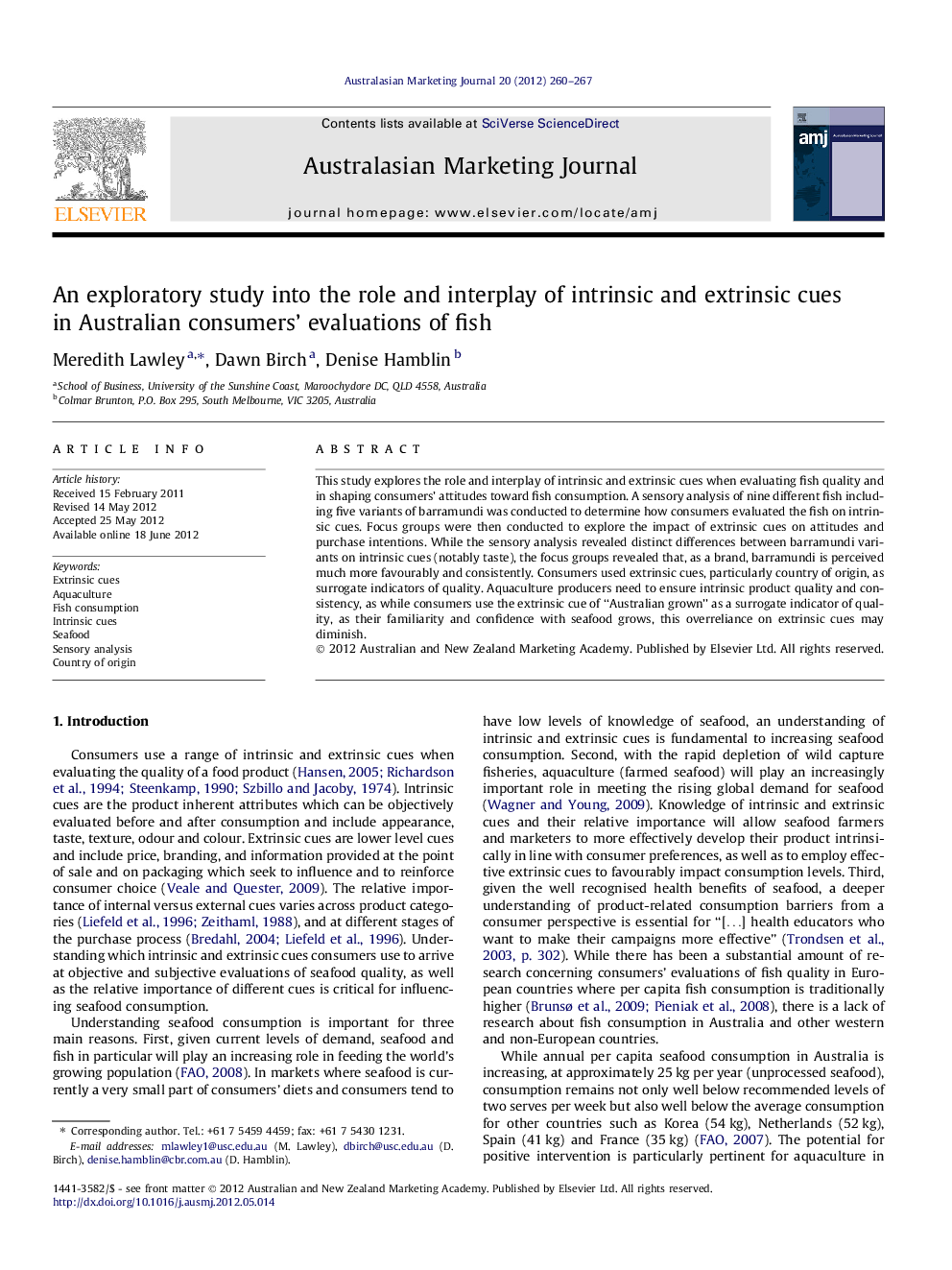| کد مقاله | کد نشریه | سال انتشار | مقاله انگلیسی | نسخه تمام متن |
|---|---|---|---|---|
| 1026969 | 1483426 | 2012 | 8 صفحه PDF | دانلود رایگان |

This study explores the role and interplay of intrinsic and extrinsic cues when evaluating fish quality and in shaping consumers’ attitudes toward fish consumption. A sensory analysis of nine different fish including five variants of barramundi was conducted to determine how consumers evaluated the fish on intrinsic cues. Focus groups were then conducted to explore the impact of extrinsic cues on attitudes and purchase intentions. While the sensory analysis revealed distinct differences between barramundi variants on intrinsic cues (notably taste), the focus groups revealed that, as a brand, barramundi is perceived much more favourably and consistently. Consumers used extrinsic cues, particularly country of origin, as surrogate indicators of quality. Aquaculture producers need to ensure intrinsic product quality and consistency, as while consumers use the extrinsic cue of “Australian grown” as a surrogate indicator of quality, as their familiarity and confidence with seafood grows, this overreliance on extrinsic cues may diminish.
► Australian consumers lack expertise and experience difficulty in evaluating seafood.
► Key intrinsic cues for seafood are the sensory qualities of taste and texture.
► Fish farmers need to maintain rigorous processes to ensure product quality.
► Australian consumers rely more heavily on extrinsic cues when evaluating seafood.
► Australian (COO) branding serves as a proxy for quality, safety and freshness.
Journal: Australasian Marketing Journal (AMJ) - Volume 20, Issue 4, November 2012, Pages 260–267